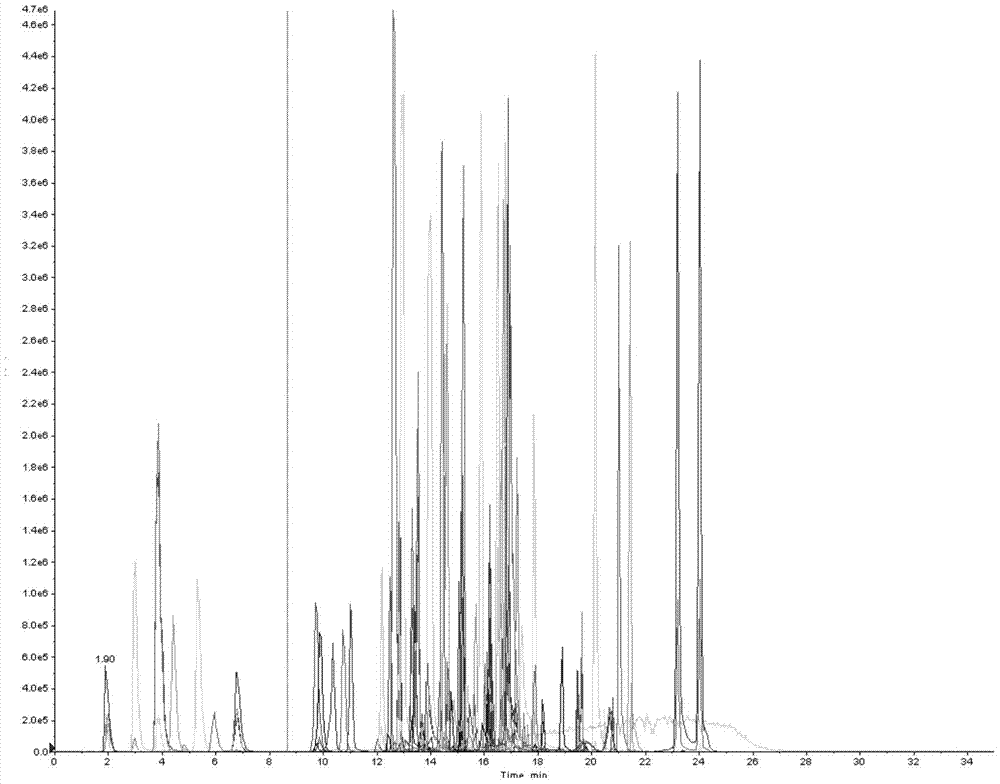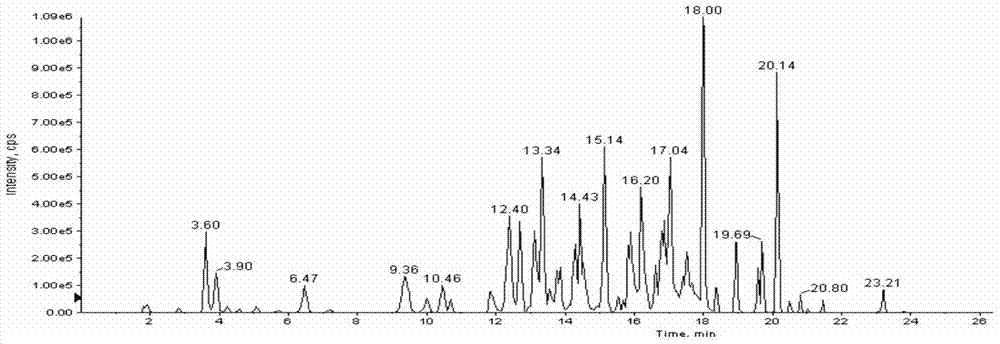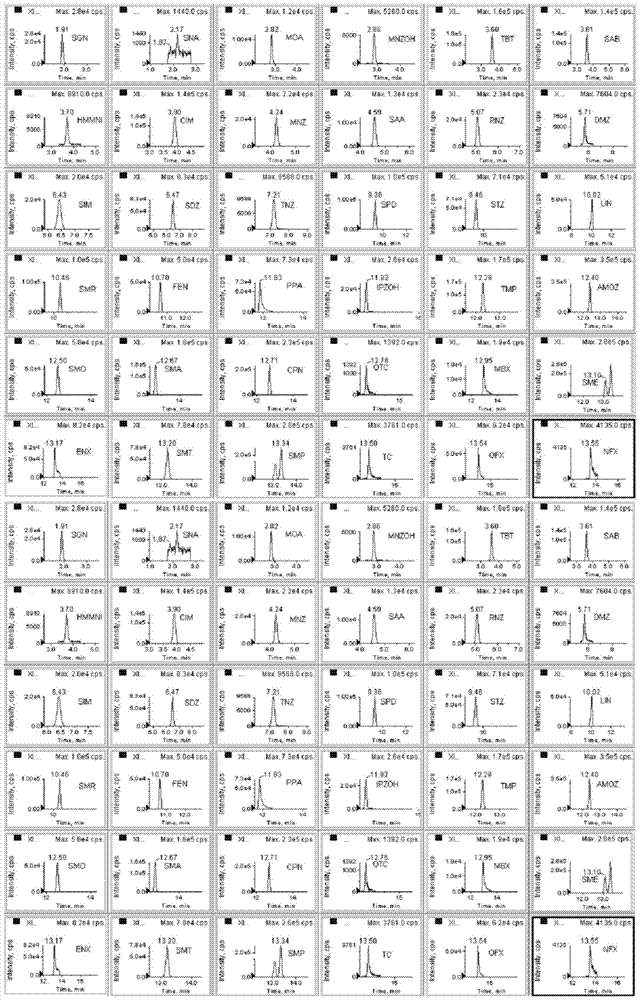Method and liquid-mass database for detecting drug residues in food of animal origin
A technology for detecting animal and liquid mass spectrometry databases, which is applied in the field of liquid mass databases for detecting drug residues in animal-derived foods, and can solve the problems of very different veterinary medicinal properties, no online information features, and different limit requirements and usage regulations.
- Summary
- Abstract
- Description
- Claims
- Application Information
AI Technical Summary
Problems solved by technology
Method used
Image
Examples
Embodiment 1
[0110] Embodiment 1. Preparation of standard working solution
[0111] Mixed standard working solution of 111 substances (0.5mg / L): pipette 0.5mL of each of the above mixed standard stock solutions (except the mixed standard stock solution of nitrofuran metabolites and their 2-nitrobenzaldehyde derivatives) into a 10mL volumetric flask In the medium, dilute to the mark with acetonitrile, and mix well. The solution is stable at -20°C for 1 month.
[0112] Mixed standard working solution of 115 substances (0.5mg / L): Pipette 0.5mL of each of the above mixed standard stock solutions (except the mixed standard stock solution of nitrofuran metabolites) into a 10mL volumetric flask, dilute to the mark with acetonitrile, and mix uniform. The solution is stable at -20°C for 1 month.
[0113] Mixed standard working solution of nitrofuran metabolites (0.5mg / L): Pipette 0.5mL of mixed standard stock solution of nitrofuran metabolites into a 10mL volumetric flask, dilute to the mark wit...
Embodiment 2
[0114] Embodiment 2. Analysis pretreatment method
[0115] For the pretreatment optimization of 103 target compounds (group B substances), the concept of the experimental design is as follows: (1) the simpler the pretreatment process, the better; (2) choose a broad extraction solvent; (3) reduce the solvent dosage, while avoiding the loss of target analytes caused by solvent conversion as much as possible; secondly, the analysis of target analytes and matrix is as follows: (1) Hormone substances and β-receptor agonist substances in target analytes need to be released by enzymatic hydrolysis Bound residual drugs; (2) The determination of nitrofuran metabolites requires acid hydrolysis and derivatization processes; (3) The selected sample matrix is a liquid animal source product (honey); (4) There are prohibited substances and restricted substances.
[0116] The specific extraction and purification process is as follows:
[0117] a) Weigh 2g of homogeneous sample (accurate...
Embodiment 3
[0130] Embodiment 3. Research on one-time sampling chromatographic analysis system
[0131] 1. Selection of chromatographic column
[0132] Ultrafine particle (particle size <2 μm) chromatographic columns are usually considered for liquid chromatographic separation of multi-target analytes. However, this study uses a conventional HPLC system with a pressure upper limit of 400 Bar, so ultra-high performance liquid chromatography columns cannot be used. In order to achieve the separation purpose of the design, considering the system pressure limitation, the particle size range of the chromatographic column is controlled between 2 μm and 3 μm, and the length of the chromatographic column is 100 mm to 150 mm; In terms of chromatographic column type, a C18 chromatographic column suitable for separating a wide polarity range was selected. Through the above limitations, this study selected one of each type of compound based on polarity (selected with reference to the LogD value), an...
PUM
 Login to View More
Login to View More Abstract
Description
Claims
Application Information
 Login to View More
Login to View More - Generate Ideas
- Intellectual Property
- Life Sciences
- Materials
- Tech Scout
- Unparalleled Data Quality
- Higher Quality Content
- 60% Fewer Hallucinations
Browse by: Latest US Patents, China's latest patents, Technical Efficacy Thesaurus, Application Domain, Technology Topic, Popular Technical Reports.
© 2025 PatSnap. All rights reserved.Legal|Privacy policy|Modern Slavery Act Transparency Statement|Sitemap|About US| Contact US: help@patsnap.com



